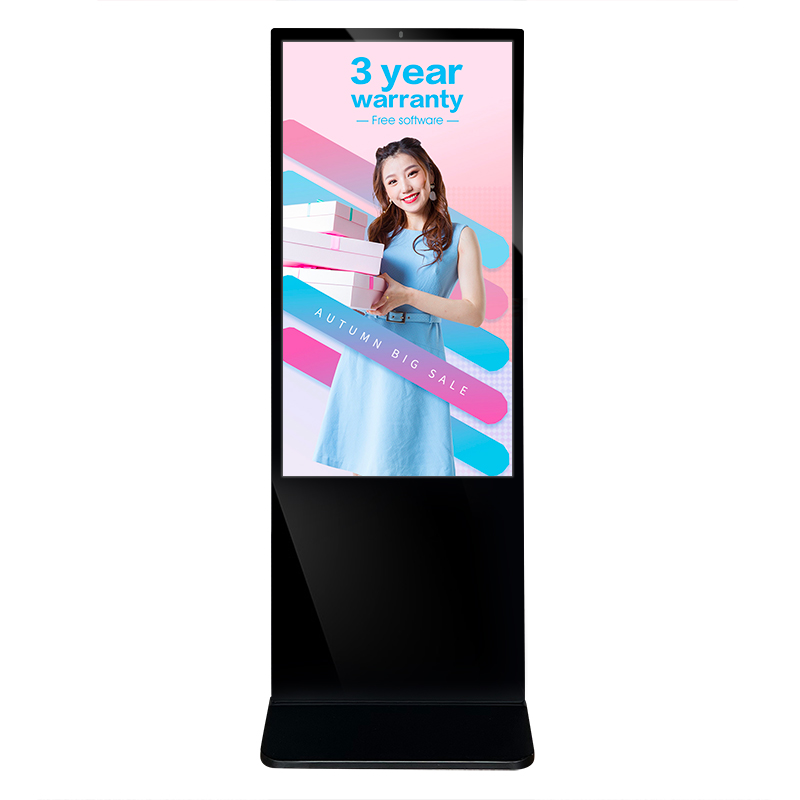
Views: 0 Author: Site Editor Publish Time: 2025-09-04 Origin: Site
In the rapidly evolving landscape of advertising and information dissemination, traditional signage is increasingly being replaced by more dynamic and interactive solutions. One such innovation is Digital Signage. This technology has revolutionized the way businesses communicate with their audience, offering a versatile and engaging platform that can be tailored to various environments and purposes. In this article, we will delve into the world of digital signage, exploring its types, benefits, and applications, with a particular focus on outdoor and indoor digital signage solutions.
 Digital signage refers to the use of digital displays, such as LCD, LED, or projection, to present multimedia content for advertising, information, or entertainment purposes. Unlike traditional static signs, digital signage allows for dynamic content that can be updated in real-time, providing a more engaging experience for viewers. This flexibility makes digital signage an attractive option for businesses looking to enhance their communication strategies.
Digital signage refers to the use of digital displays, such as LCD, LED, or projection, to present multimedia content for advertising, information, or entertainment purposes. Unlike traditional static signs, digital signage allows for dynamic content that can be updated in real-time, providing a more engaging experience for viewers. This flexibility makes digital signage an attractive option for businesses looking to enhance their communication strategies.
Digital signage can be broadly categorized into two main types: outdoor digital signage and indoor digital signage. Each type has its unique characteristics and applications, catering to different needs and environments.
Outdoor digital signage is designed to withstand harsh weather conditions and provide high visibility in various lighting environments. It is commonly used in public spaces, such as bus stops, shopping malls, and sports arenas, to deliver advertisements and information to a wide audience. Indoor digital signage, on the other hand, is typically used in controlled environments like retail stores, corporate offices, and educational institutions, where it can be used for wayfinding, product promotion, and internal communication.
The benefits of digital signage are manifold. Firstly, it offers unparalleled flexibility in content management. Businesses can easily update their displays with new promotions, information, or branding messages without the need for physical replacements. This not only saves time and resources but also ensures that the content remains relevant and engaging.
Moreover, digital signage enhances customer engagement by providing interactive and visually appealing content. With the integration of touchscreens and sensors, businesses can create immersive experiences that captivate their audience and encourage interaction. This can lead to increased brand awareness and customer loyalty.
Another significant advantage is the ability to gather data and insights. Digital signage systems can track viewer interactions and preferences, providing valuable analytics that can inform marketing strategies and improve customer experiences. This data-driven approach allows businesses to tailor their content to better meet the needs and interests of their audience.
Digital signage is a versatile tool that can be applied across various industries and settings. In retail, it is used to showcase products, highlight promotions, and guide customers through the store. In corporate environments, digital signage can facilitate internal communication, display company news, and enhance meeting presentations.
In the hospitality industry, digital signage is employed to provide guests with information about hotel amenities, local attractions, and events. Educational institutions use digital signage to communicate with students and staff, display schedules, and promote campus activities. Additionally, digital signage is increasingly being used in healthcare settings to provide patients with information about services, wait times, and health tips.
Several case studies highlight the effectiveness of digital signage in various applications. For instance, a major retail chain implemented digital signage across its stores to enhance the shopping experience and drive sales. By displaying targeted promotions and product information, the chain saw a significant increase in customer engagement and revenue.
In another example, a university utilized digital signage to improve campus communication and wayfinding. The system allowed the university to quickly disseminate important information to students and staff, resulting in improved operational efficiency and a more connected campus community.
Digital signage represents a powerful tool for modern communication, offering dynamic and interactive solutions that traditional signage cannot match. With its ability to engage audiences, provide real-time updates, and gather valuable data, digital signage is poised to become an integral part of business strategies across various industries. As technology continues to advance, the possibilities for digital signage are endless, promising even more innovative applications and enhanced user experiences.
For businesses looking to stay ahead in the competitive market, embracing digital signage is not just an option but a necessity. By leveraging the power of digital displays, companies can create impactful and memorable experiences that resonate with their audience and drive success. Explore more about the potential of indoor digital signage and how it can transform your business communication strategies.
